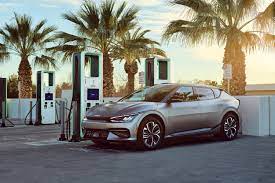
carbon
Achieving net zero carbon emissions is one of the most critical challenges of our time. The concept of net zero involves balancing the amount of greenhouse gas emissions produced with the amount removed from the atmosphere. This goal is vital for stabilizing global temperatures and mitigating the catastrophic effects of climate change. Among the sectors contributing to greenhouse gas emissions, transportation is a major player, accounting for 13.7% of global emissions, second only to electricity and heat production. This essay explores the significant role transportation plays in achieving net zero, the challenges involved, and the effective steps that can lead us toward a sustainable future.
We often hear in school, on the news, or in daily conversations that the Earth is getting warmer, but many of us may not understand the term “net zero carbon emission.” So, what does it actually mean? Net zero carbon emission refers to balancing the carbon we release into the air with the carbon we remove, ensuring the total amount in the atmosphere does not increase. This balance is essential for halting climate change and protecting our planet.
Climate change happens primarily because of human activities that increase greenhouse gas emissions, such as deforestation, industrial processes like cement, steel, and chemical production, transportation using fossil fuels, energy production from burning coal and gas, and agricultural practices involving livestock, rice farming, and fertilizers. These activities release significant amounts of carbon dioxide and other greenhouse gases into the atmosphere, trapping heat and causing the Earth to warm.
The need to achieve net zero carbon emissions is critical because climate change has severe consequences. It leads to global warming, rising sea levels, extreme temperatures, and catastrophic impacts on human health, agriculture, and ecosystems. Among these contributors, transportation plays a significant role, accounting for 13.7% of global emissions, making it the second-largest contributor after electricity and heat production, according to the World Resources Institute. Transportation emissions have been rising for years, and without intervention, they are expected to continue increasing. This highlights the importance of addressing transportation emissions as a key step toward achieving net zero and ensuring a sustainable future for generations to come.
Reducing transportation emissions requires effective solutions, and one of the most promising approaches is transitioning to electric vehicles (EVs). Electric cars and buses are becoming more common in developed countries and are among the most effective ways to reduce emissions. EVs operate without tailpipe emissions, offering a cleaner alternative to traditional internal combustion engine vehicles. In vehicles with internal combustion engines, the engine burns fuel to produce energy, which powers the vehicle. This combustion process breaks down hydrocarbons in the fuel, combining them with oxygen from the air to produce energy, carbon dioxide, water, and other byproducts. Passenger cars alone account for nearly 3 billion metric tons of carbon dioxide emissions annually, making them a significant contributor to global transportation emissions.
Electric vehicles have several advantages that make them an appealing option for reducing emissions. They produce zero tailpipe emissions, eliminating the direct release of carbon dioxide during operation, which makes them environmentally friendly. Additionally, electricity is generally cheaper than gasoline or diesel, and EVs require less maintenance, lowering operating costs for users. Furthermore, charging EVs with renewable energy sources, such as solar or wind power, enhances their environmental benefits, as the electricity used to power them is also clean. Many EV users report that these vehicles are quieter, more environmentally friendly, and easier to charge compared to gasoline or diesel-powered cars.
Despite these benefits, there are significant barriers to the widespread adoption of EVs. One of the biggest challenges is their high cost. As a relatively new technology, EVs are expensive to produce, which makes them less accessible, particularly for lower-income individuals. Additionally, underdeveloped and developing countries face considerable challenges in transitioning from traditional vehicles to electric ones due to a lack of infrastructure and financial resources. These regions are likely to struggle to adopt EVs at the same pace as developed countries. Addressing these barriers is essential to ensure a global transition toward sustainable transportation and to make the benefits of EVs accessible to all.
To make EVs accessible to undeveloped countries and lower-income communities, governments and manufacturers can focus on subsidies and the development of affordable EV models. Subsidies and tax incentives can significantly lower the upfront cost of EVs, making them more attainable for consumers who might otherwise be unable to afford them. Offering low-interest loans or financing programs can further ease the financial burden, particularly in regions where disposable income is limited. Another effective strategy is the creation of low-cost EV models specifically designed for developing markets. These vehicles, while simpler in design, can fulfill basic transportation needs at a lower price point. Additionally, promoting a second-hand EV market can help lower-income groups access vehicles at a reduced cost, further democratizing EV adoption. By focusing on these strategies, we can ensure a more equitable transition to sustainable transportation, enabling broader participation in the movement toward a cleaner, greener future.
Achieving net zero carbon emissions is not just a challenge; it is an urgent necessity for the survival of our planet and the well-being of future generations. Transportation, as one of the largest contributors to greenhouse gas emissions, plays a pivotal role in this transition. By addressing its significant impact, particularly through the adoption of EVs and the development of accessible and affordable solutions, we can make meaningful strides toward reducing emissions. The widespread implementation of EVs, supported by subsidies, affordable models, and renewable energy-powered charging infrastructure, offers a viable path to a more sustainable transportation sector. Overcoming barriers such as high costs and infrastructure limitations will require collaboration between governments, industries, and global organizations. Ensuring equitable access to EVs, especially for lower-income communities and undeveloped countries, is essential for fostering global participation in this vital effort.
Transitioning to net zero carbon emissions will require determination, innovation, and collective action. By prioritizing sustainable solutions, we can mitigate the effects of climate change, protect our ecosystems, and pave the way for a healthier, greener, and more equitable future. The journey to net zero begins with the steps we take today to create a cleaner and more sustainable tomorrow.
By: Michelle Yang
Write and Win: Participate in Creative writing Contest & International Essay Contest and win fabulous prizes.


